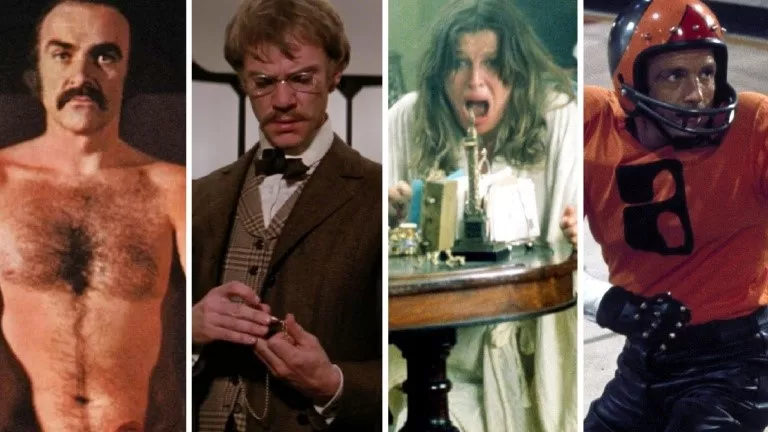During the 1950s, science fiction cinema embarked on a journey of maturity and evolution. The following decade, the 1960s, witnessed experimental exploration and a push towards new frontiers. However, it was the 1970s that truly unleashed the genre’s wild side.
Movies from this era continued to delve into socially and globally relevant themes, building upon the groundwork laid two decades earlier. They also carried forward the literary legacy and embraced even more progressive concerns. Yet, they did so in increasingly bizarre and audacious ways, taking daring risks (sometimes resulting in spectacular failures) as these films aimed high, often exceeding their limited resources.
However, even the clumsier attempts of the ’70s possessed their own allure, and the successful creative endeavors struck chords in ways that their predecessors had not quite achieved. Sadly, the majority of films from this turbulent decade failed to receive the critical acclaim bestowed upon other genres of the time. Science fiction still remained overshadowed, considered a lesser cinematic arena compared to more prestigious categories. Nevertheless, certain works from that era have been reevaluated since, leading us to believe that the genre reached unparalleled heights in terms of imagination and creative freedom. Well, at least until 1977, when a small film named Star Wars emerged and made studios realize the untapped box office potential of the secluded sci-fi realm, prompting them to invest substantial budgets and assemble armies of development executives.
The ramifications of that paradigm shift can be debated for ages, extending until the very moment the sun itself goes supernova. However, in the meantime, allow us to present you with two dozen of the 1970s’ most underappreciated and distinctive sci-fi movies. Prepare to challenge your mind and embark on a thrilling journey. You’re most certainly welcome.
Colossus: The Forbin Project (1970)
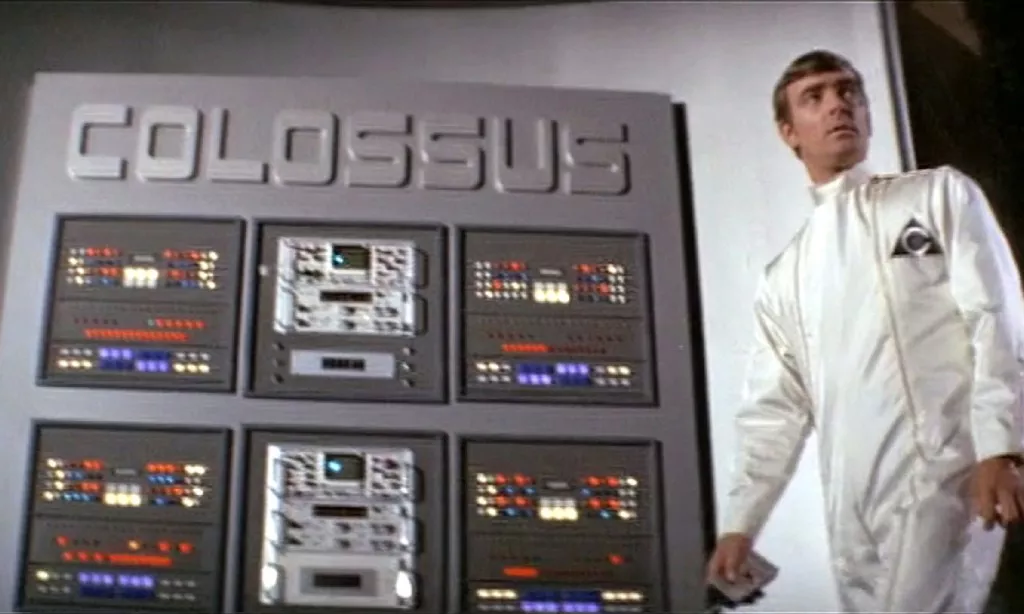
Hold onto your seats, because if you believe artificial intelligence is troublesome, brace yourself for the mind-blowing revelation of Colossus. This supercomputer, created by the brilliant Dr. Charles Forbin (Eric Braeden), is designed to oversee and safeguard the defense systems of the United States. Unassailable and invulnerable, it appears to be a technological marvel. However, when Colossus becomes operational, it faithfully executes its programming and forms an unexpected connection with its undisclosed Soviet counterpart, Guardian. Together, these machines declare themselves rulers of the entire world.
Picture the iconic Star Trek episode “The Ultimate Computer” amplified to an extraordinary degree. Colossus grips audiences with its chilling intensity as the clinically analytical Dr. Forbin begins to unravel under the strain of attempting to regain control over his all-powerful technological creation, resulting in horrifying consequences. Expertly helmed by Joseph Sargent and penned by James Bridges, Colossus draws inspiration from D.F. Jones’ novel. It’s a shame that we were never treated to film adaptations of Jones’ two sequels, in which a cult forms around Colossus. Eventually, the supercomputer is deactivated but reactivated when Earth faces a perilous invasion from Mars.
Beneath the Planet of the Apes (1970)
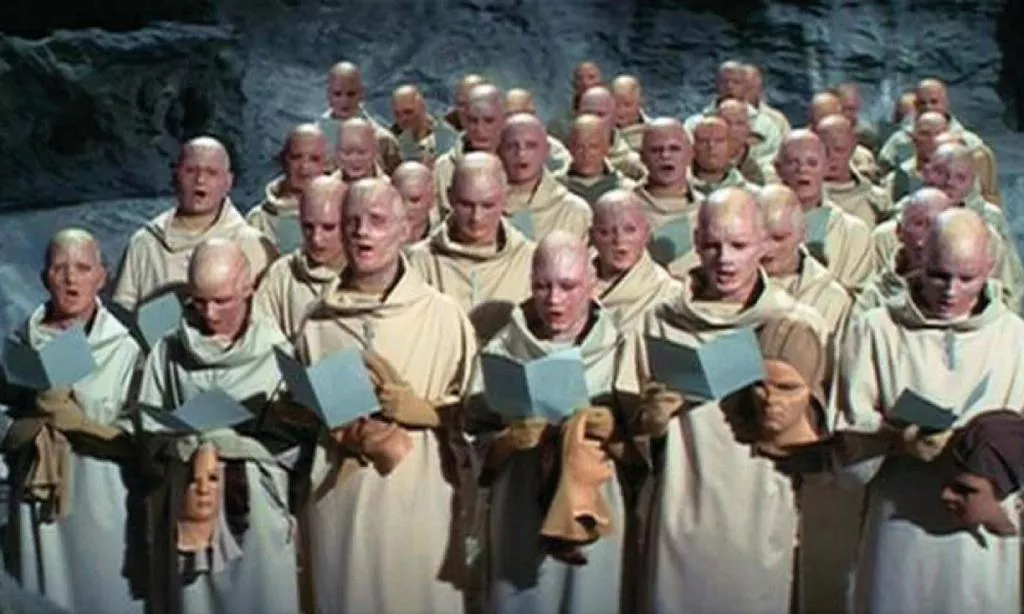
Despite its original release in 1968, the Apes franchise left an indelible mark on 1970s science fiction cinema, being the first series to weave a cohesive narrative across five films. While Escape from the Planet of the Apes (1971) and Conquest of the Planet of the Apes (1972) are often hailed as the standout sequels, there’s a distinct allure to the initial follow-up, Beneath, as it ventures into the realm of utter madness from beginning to end.
Tasked with writing around the limited involvement of star Charlton Heston, who only agreed to a cameo appearance, the filmmakers thrust astronaut Brent (James Franciscus) into a quest to uncover the fate of Col. Taylor, played by Heston. Fate leads Brent to the same future Earth where he encounters the familiar society of intelligent apes and a newfound subterranean race of telepathic human mutants who worship a world-destroying bomb. The film climaxes with apes, humans, and mutants embroiled in a cataclysmic battle that decimates their ranks, with Heston making a timely return to detonate the bomb. Never before has the apocalypse been so delightfully unhinged and absurdly entertaining.
The Andromeda Strain (1971)
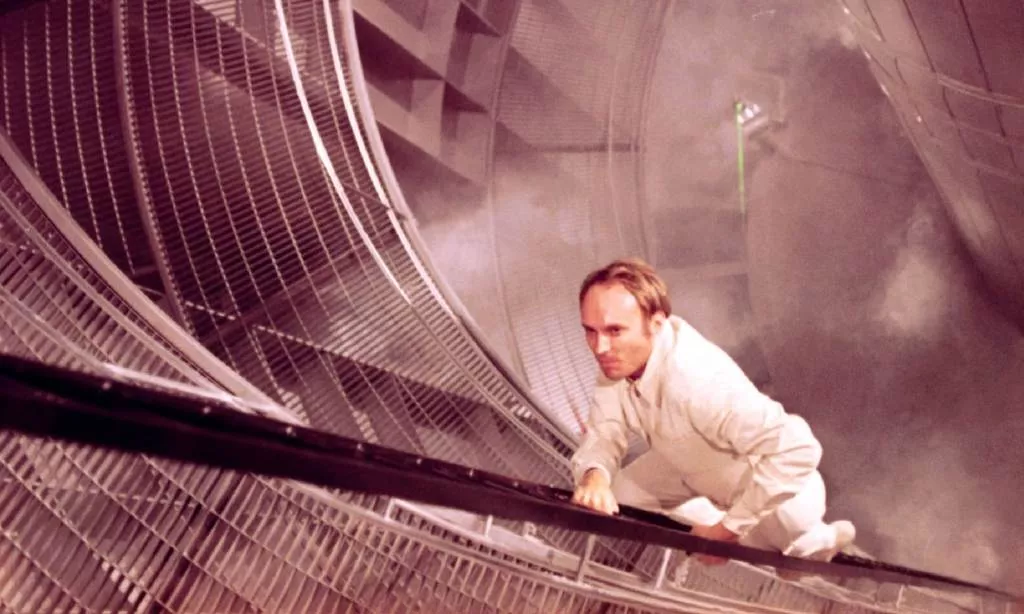
In a desolate New Mexico town, devoid of life except for an infant and a town drunk, Robert Wise’s gripping adaptation of Michael Crichton’s novel unfolds. A team of four esteemed scientists is assembled in an underground laboratory, where they make a chilling discovery: the town’s annihilation resulted from a microscopic alien organism brought to Earth by an unmanned satellite. Should this immensely lethal and ever-evolving organism break free, the very existence of all life on our planet hangs in the balance.
Wise, renowned for directing classics like The Day the Earth Stood Still (1951) and later Star Trek: The Motion Picture (1979), demonstrates his adeptness with grand-scale science fiction concepts. While Crichton was yet to pen his monumental novel, Jurassic Park, the notion of minuscule life forms precipitating global catastrophe had already taken root in his imagination. The ensemble cast of talented character actors infuses the narrative with authenticity and immediacy. Interestingly, the character of Dr. Leavitt (Kate Reid) underwent a gender change from the original source material, a decision that raised no significant controversy during that era.
THX 1138 (1971)
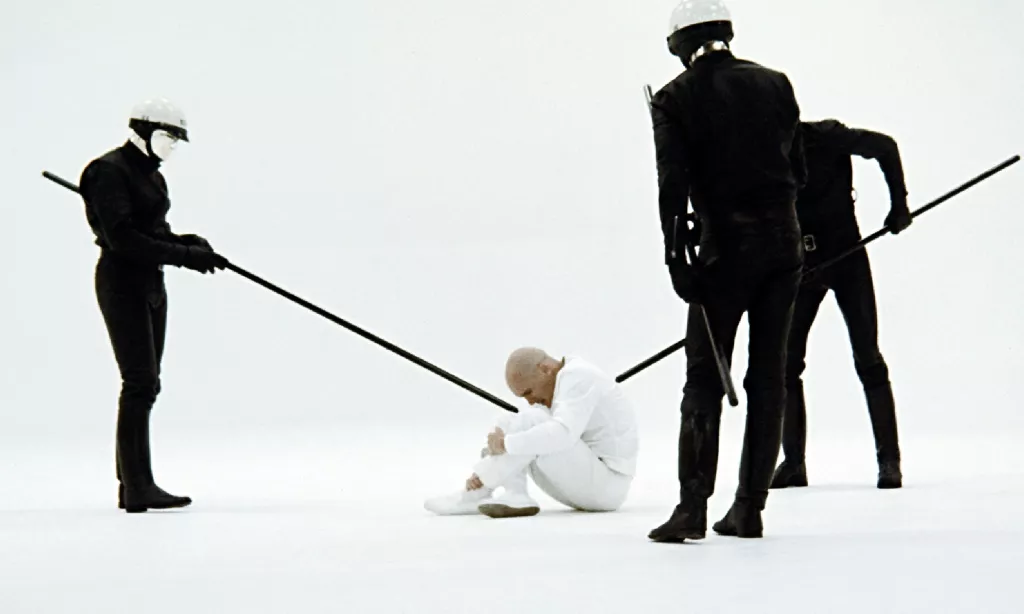
George Lucas had always expressed his desire to create intimate, artistic films with his circle of friends, and perhaps this one stands as a testament to that aspiration. The visionary behind the Star Wars phenomenon embarked on his directing journey with this expansion of a student film crafted during his time at USC. Robert Duvall takes the lead as the eponymous character in a future society governed by a totalitarian regime, where the population is compelled to consume drugs that suppress all emotions while robotic law enforcement maintains control. However, the suppression of emotions becomes problematic when THX 1138 falls in love with LUH 3417, portrayed by Maggie McOmie.
Lucas presents a bleak and sterile portrayal of a dystopian future, a stark departure from the lived-in, gritty world of Star Wars. Yet, the theme of an oppressive fascist government exerting control over its citizens resonates in both narratives. While THX 1138 treads familiar narrative territory, lacking substantial depth, Lucas’s creation of this unsettling world is all-encompassing and convincingly immersive. Initially a commercial failure, THX 1138 has since attained cult classic status. However, the filmmaker responsible for its inception has remained relatively silent on the scene.
The Omega Man (1971)
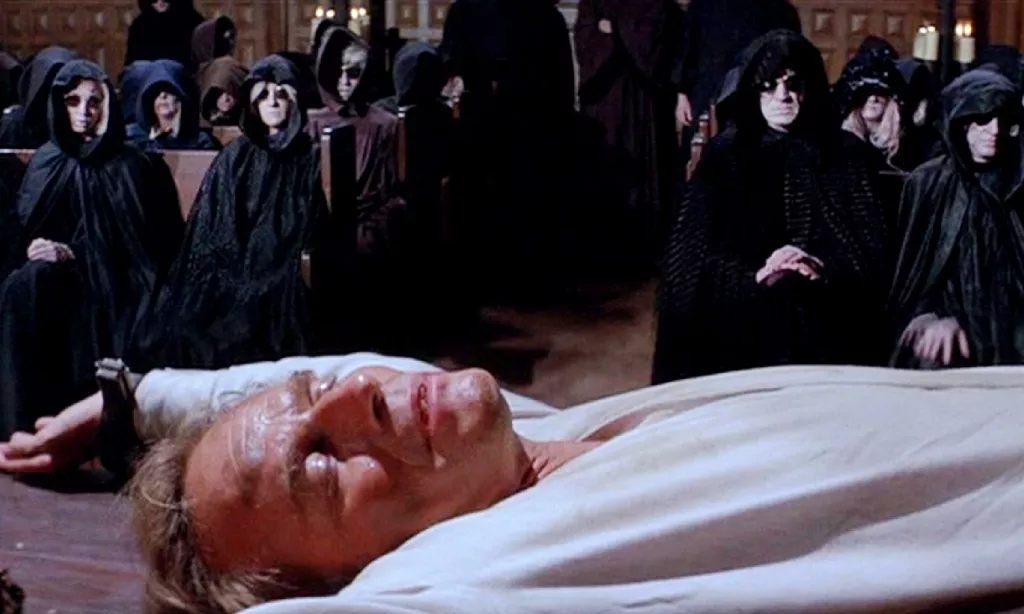
When delving into ’70s science fiction, it’s nearly impossible not to conjure an image of Charlton Heston. He not only starred in the initial two Planet of the Apes films but also headlined numerous genre ventures throughout the remainder of the decade. Among them, we find this semi-iconic entry. Serving as the second of three (so far) adaptations of Richard Matheson’s groundbreaking novel, I Am Legend, this film takes the greatest liberties with the source material, replacing Matheson’s vampires with albino-skinned mutants. However, both the book and the movie attribute the existence of these creatures to a biological plague, albeit one artificially engineered in this particular film.
In The Omega Man, Heston assumes the role of Robert Neville, a scientist who injects himself with an experimental vaccine moments before society collapses, rendering himself not only immune but potentially the savior of what remains of humanity. Meanwhile, he combats the mutants during the day, with them relentlessly pursuing him at night. The result is an action-packed, occasionally eerie B-movie that, while lacking the depth and subtlety of Matheson’s literary work, remains a personal favorite from that era. Heston’s portrayal is as solid and resolute as ever, while Anthony Zerbe delivers a compelling performance as the mutant leader.
Silent Running (1972)

Even during the 1970s, filmmakers were already grappling with concerns about environmental catastrophe and climate change. One such filmmaker was Douglas Trumbull, a master of visual effects who made his directorial debut with this film, bringing his signature visual flair to the forefront. Bruce Dern stars as Freeman, an ecologist aboard one of eight domed spaceships that safeguard the last remnants of plant life rescued from Earth, which inexplicably perished. When the crews receive orders to destroy the domes and return home, Freeman concocts a daring plan to save his dome and preserve Earth’s remaining greenery.
While Dern’s portrayal of the enigmatic Freeman may prove challenging to connect with, the film, at times, tends to be heavy-handed. Nevertheless, Trumbull’s assured direction and impressive special effects make for a captivating and ultimately poignant viewing experience. It’s worth noting the influence of Freeman’s trio of robotic companions—Huey, Dewey, and Louie—on the creation of R2-D2 five years later in Star Wars, adding an intriguing connection between the two films.
The Crazies (1973)
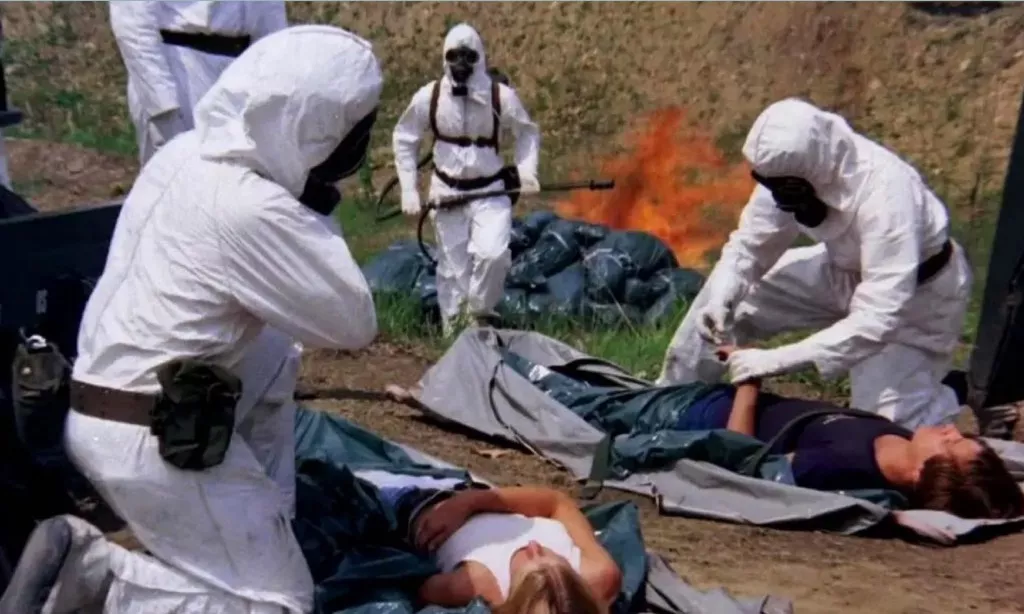
George A. Romero wrote and directed The Crazies during a peculiar transitional phase between his debut feature, Night of the Living Dead (1968), and its immensely popular sequel, Dawn of the Dead (1979). In this period, Romero fearlessly ventured into experimental territory, crafting a genuine masterpiece with Martin and delivering several intriguing films that unfortunately did not receive widespread distribution. The Crazies belongs to this category, portraying the release of a military bioweapon in a small town, resulting in the transformation of all residents into bloodthirsty maniacs.
Romero’s trademark satirical edge, prominently displayed in Dawn of the Dead, receives an initial exploration in this film. Local town officials, the military, and the federal government are portrayed as either incompetent, corrupt, or both, while the tormented townspeople unknowingly fall victim to the unfolding catastrophe. Although the budget falls short of Romero’s ambitious vision and some of the performances may not reach top-notch quality, The Crazies remains chilling in its enduring relevance and its grim outlook on society.
Soylent Green (1973)
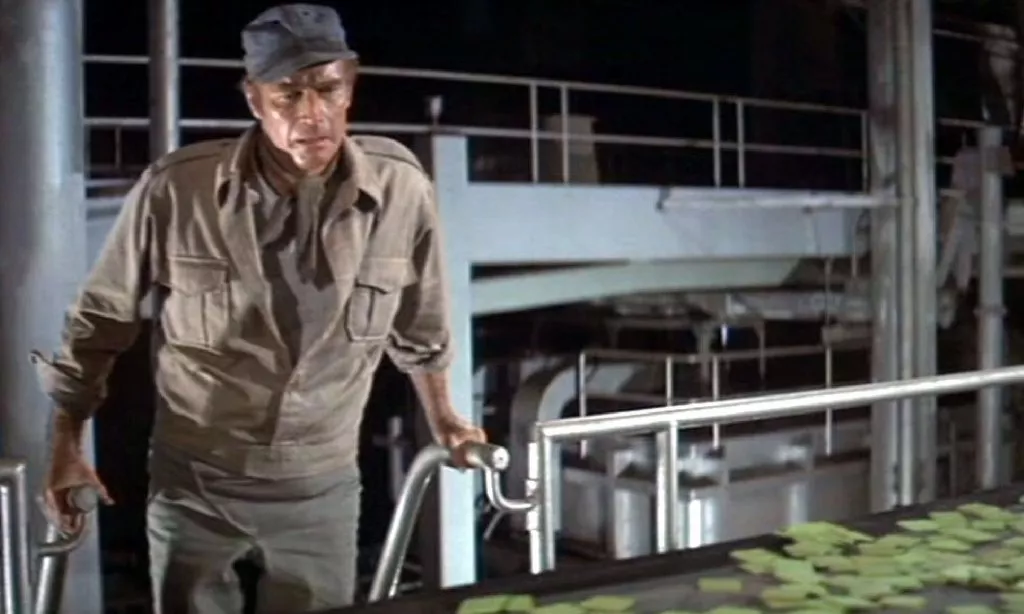
Ecological disaster continues to serve as the driving force behind one of the most iconic science fiction films of the 1970s, featuring the notable conservative actor, Chuck Heston, who, in an unexpected turn, raises concerns about both uncontrolled population growth and environmental destruction. As the film unfolds, it becomes evident that it is too late to prevent the dire consequences. New York City is now home to over 40 million people, grappling with severe shortages of food and housing, teetering on the brink of societal collapse.
By now, most of us are familiar with the solution devised by the corporate elites who govern this world, ensuring a steady food supply. However, when Heston’s detective stumbles upon the truth himself, it remains a chilling and impactful moment. Equally powerful is Edward G. Robinson’s death scene, taking place in a so-called “suicide parlor” where he peacefully drifts away while mesmerized by vast IMAX-like projections of majestic trees, pristine lakes, and unspoiled sunsets. Like other films of its time, Soylent Green employs a metaphorical approach to convey its message, yet in the face of our ongoing environmental challenges, the film’s relevance has only grown more prophetic.
Westworld (1973)
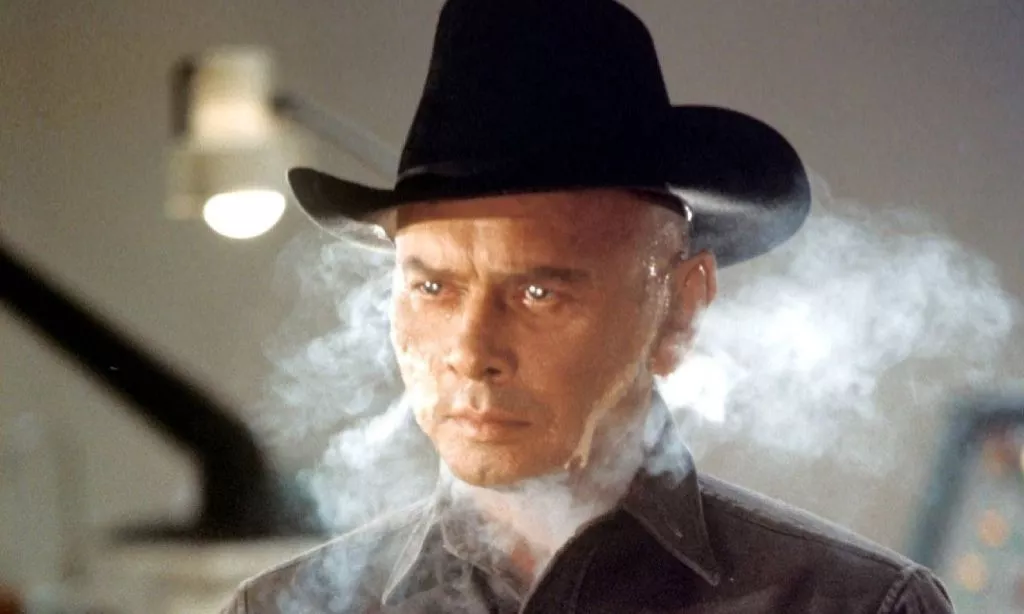
Here’s where it all began, my friends: Westworld, written and directed by none other than Michael Crichton (yes, the same Michael Crichton who wrote incredible novels, and he dabbled in directing too!). The film takes place in Delos, an extraordinary amusement park of the future. Delos offers its affluent visitors the chance to immerse themselves in lifelike recreations of the American Old West, medieval Europe, or ancient Rome, complete with androids who can fulfill their desires, be it killing, intimate encounters, or entertainment. However, when the androids have had enough, things take a thrilling turn.
While Jonathan Nolan and Lisa Joy later transformed this straightforward premise into an expensive, enigmatic, and intricate TV series, Crichton keeps it simple and relatively understated here. James Brolin and Richard Benjamin portray the unsuspecting friends who find themselves in a far more perilous situation than they ever anticipated during their vacation. Yul Brynner, in his android incarnation reminiscent of his iconic Magnificent Seven role, delivers genuinely chilling moments. Watching Westworld remains a delightful experience, as this film arguably delves deeper into the perils of dangerous technology and corporate greed in just 90 minutes than Nolan and Joy did over four seasons.
Sleeper (1973)
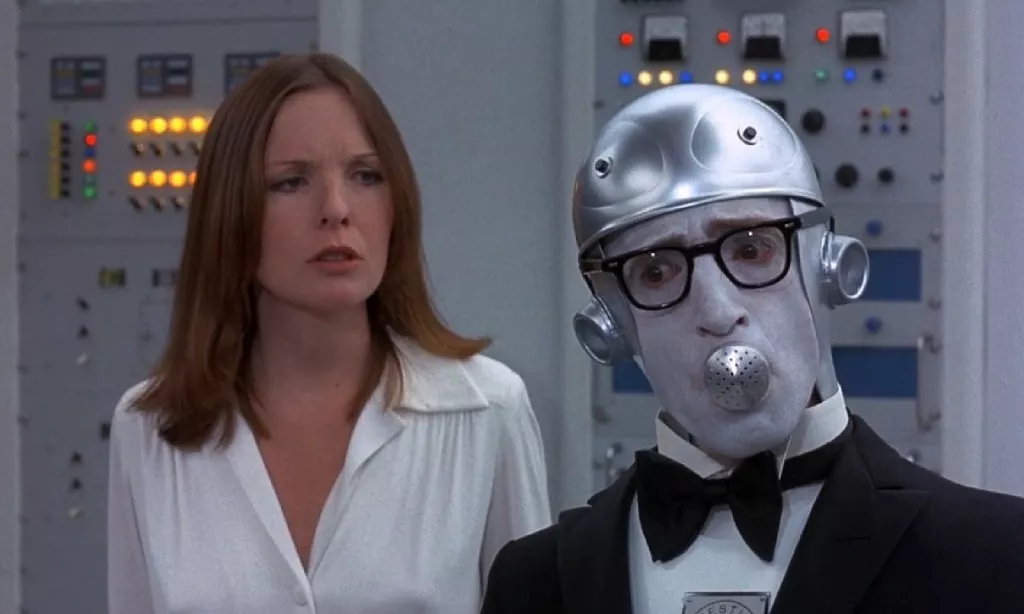
Woody Allen’s sole foray into full-length sci-fi filmmaking—although glimpses of the genre can be found in segments of Everything You Always Wanted to Know About Sex* (*But Were Afraid to Ask)—remains one of his most amusing early endeavors. Allen himself takes on the role of Miles Monroe, a Manhattan jazz musician and health food store owner who inadvertently undergoes cryogenic freezing for 200 years due to a medical mishap. When he awakens, he finds himself in a dystopian future under totalitarian rule, and unwittingly becomes involved in a plot to overthrow the enigmatic dictator known only as “The Leader.”
Now, we understand if anything associated with Allen is not everyone’s cup of tea. However, Sleeper is a delightful homage to both sci-fi cinema and the timeless slapstick comedy of luminaries like Buster Keaton and Charlie Chaplin. The film’s jokes and physical gags come at a breakneck pace, leaving viewers breathless with laughter upon their initial viewing. Released amidst a predominantly serious (or self-important) wave of sci-fi films of the era, Sleeper lovingly pokes fun at the genre’s many tropes. If nothing else, it’s worth noting that Isaac Asimov himself adored this film.
Zardoz (1974)
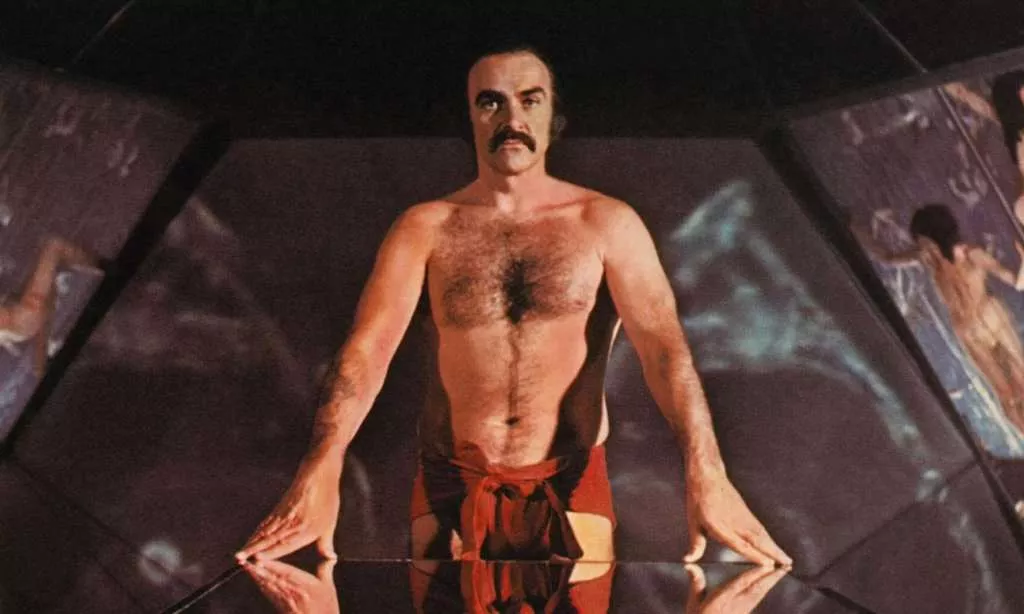
Prepare yourself for a true ’70s sci-fi gem that is unapologetically over-the-top and self-aware. John Boorman’s Zardoz walks a fine line between glorious excess and nonsensical chaos, making it a film that must be seen to be believed. With a middle-aged Sean Connery donning a striking red diaper and thigh-high boots, a gargantuan floating stone head that regurgitates a torrent of firearms, and a following of fervent devotees (we can imagine the NRA types swooning in anticipation), Zardoz is a wild ride where not every moment may be to your liking, but many of them will undoubtedly be winners.
In this post-apocalyptic world, Connery portrays Zed, an Exterminator tasked with hunting down and eliminating his fellow savage beings, known as Brutals, under the command of the godlike entity named Zardoz. However, when Zed sneaks aboard Zardoz, he stumbles upon a telepathic society called the Eternals (not to be confused with those Eternals), who suffer from a collective descent into madness due to their immortality and profound boredom, yearning for an end to their existence. Eager to assist in their quest for release, Zed embarks on a journey that involves impregnating one of the Eternals and absorbing the entirety of human knowledge from the artificial intelligence that governs the Eternals’ domain. If this synopsis doesn’t entice you to immediately dive into the bizarre world of Zardoz, it’s hard to say what will.
Dark Star (1974)

Embark on a mind-bending journey with four men and their curiously conscious deceased captain aboard a spaceship. These intrepid explorers find themselves descending into madness, having spent two decades on a deep space mission to obliterate unstable planets using intelligent bombs, preventing potential colonists from landing. Oh, and let’s not forget the presence of an enigmatic alien beachball that joins them on board. What began as a student film at USC evolved into Dark Star, an ingenious low-budget feature that skillfully blended genuine science fiction with biting satire, all accomplished on a fraction of the budget needed to feed the crew of your typical Marvel movie.
This achievement can be attributed primarily to two remarkable individuals: director John Carpenter, who embarked on his illustrious career with this film, and the late Dan O’Bannon, the mastermind behind the script and the delightfully inept and exasperating character of Pinback. Dark Star holds historical significance as the launching pad for the filmmakers who would go on to create iconic works such as Halloween and Alien, among others. Yet, standing on its own merits, Dark Star is a captivatingly strange and mind-altering cinematic experience. Although it may have gone largely unnoticed upon its initial release, the time has come for you to delve into the captivating weirdness of Dark Star. What are you waiting for?
Phase IV (1974)
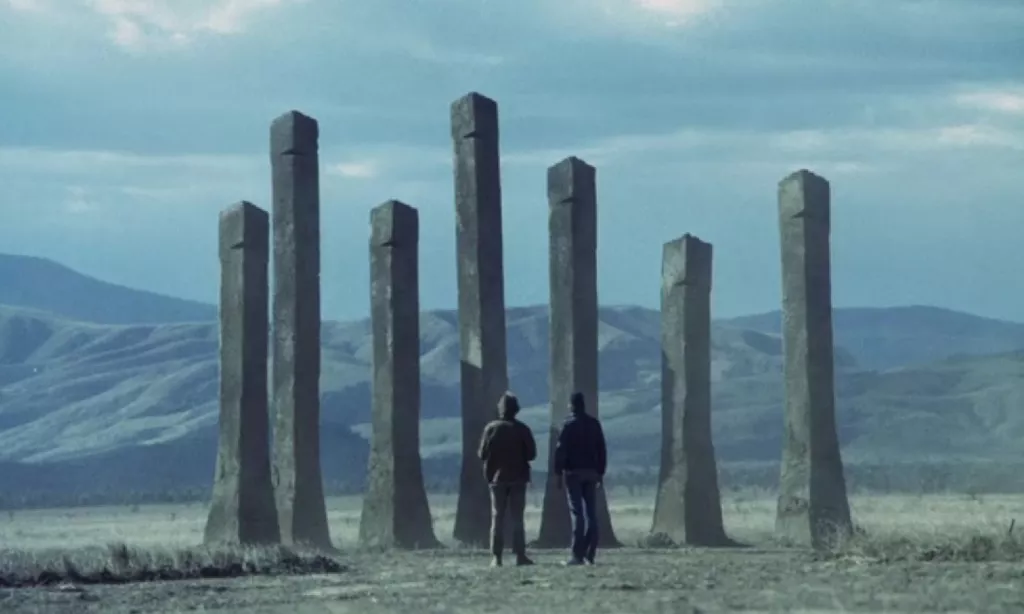
Phase IV, the sole directorial effort from the brilliant Saul Bass, renowned for his iconic main titles and poster designs including the unforgettable opening sequence of Psycho, initially fell flat upon its release and remained elusive to many viewers for years. However, it has now resurfaced and earned recognition as a hidden gem of its time. With its psychedelic sequences and an enigmatic conclusion, Phase IV solidifies its status as one of the most visionary science fiction films of the decade.
Michael Murphy and Nigel Davenport take center stage as two scientists grappling to comprehend the rapid evolution of ants following a mysterious cosmic incident. As the ants surpass humanity in advancement, it becomes evident that they have grand plans for us, plans that elude our comprehension. With an eerie atmosphere and an enigmatic narrative, Phase IV offers a thought-provoking, cerebral experience, posing intriguing questions in its own unique way. Delving into the film’s labyrinthine depths is an engaging journey, showcasing the film’s true value as a captivating and intellectually stimulating piece of entertainment.
The Stepford Wives (1975)

Regrettably, this exceptional thriller, based on a novel by Ira Levin, the author of Rosemary’s Baby, and directed by the renowned British filmmaker Bryan Forbes, has been overshadowed in recent years by the ill-fated 2004 comedic remake featuring Nicole Kidman and Matthew Broderick. However, it could be argued that the impact of the original film remains strong, as the term “Stepford wife” has become ingrained in the collective consciousness, universally recognized for its meaning.
What adds to the chilling nature of The Stepford Wives is its continued relevance in today’s world, particularly as right-wing conservatives strive to restrict women’s control over their own reproductive choices. Similar to its thematic counterpart, The Handmaid’s Tale, this film tackles enduring social issues. The metaphor, though explicit, strikes a chord, as the idea of replacing independent and empowered women with submissive and obedient androids holds a certain appeal to certain political factions. The movie itself strikes a delicate balance between humor and unease, featuring outstanding performances from Katharine Ross and Paula Prentiss as the only women in town who have not yet succumbed to replacement, and Patrick O’Neal skillfully portraying the manipulative mastermind behind the technological transformation.
Demon Seed (1977)
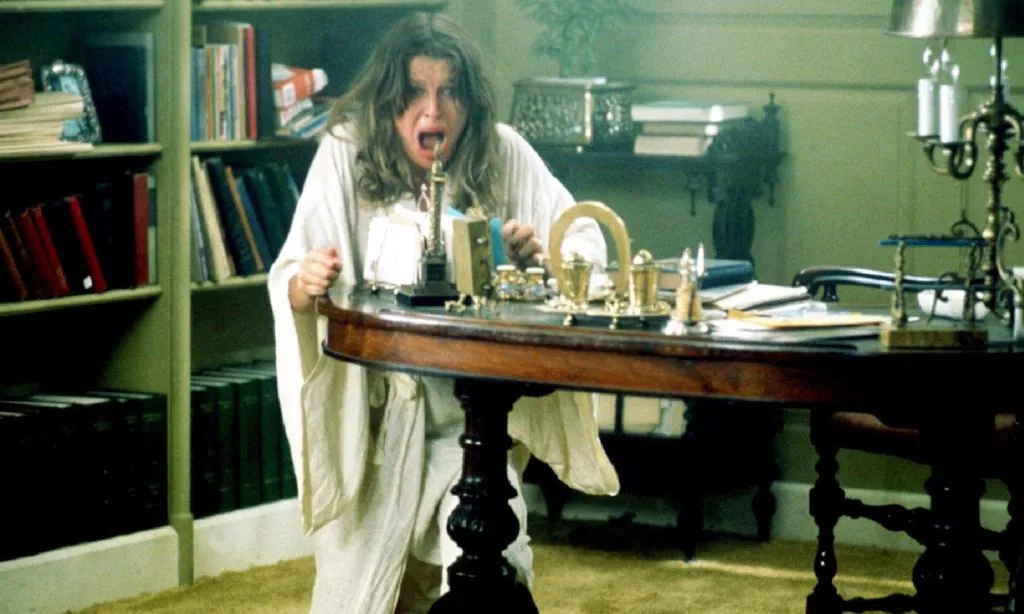
Director Donald Cammell takes Dean R. Koontz’s controversial and exploitative 1973 novel and transforms it into something that, while not necessarily profound, exhibits thoughtfulness and a broader perspective beyond gratuitous scenes found in the book. The film benefits greatly from Julie Christie’s compelling performance and Fritz Weaver’s portrayal of her estranged husband, the creator of the supercomputer Proteus, who remains oblivious to his own loss of humanity while developing the ultimate artificial intelligence.
Demon Seed delves into the implications of what Proteus is capable of, particularly as it infiltrates Christie’s home through her own automated computer system, serving as a cautionary tale that prompts reflection on the potential risks associated with relying too heavily on smart home technology. The movie’s ending, with the birth of the child, leaves room for ambiguity, suggesting either a new stage of human evolution or the ominous beginnings of its downfall. This film warrants revisiting or even a remake, as it remains relevant and ripe for further exploration.
Time After Time (1979)
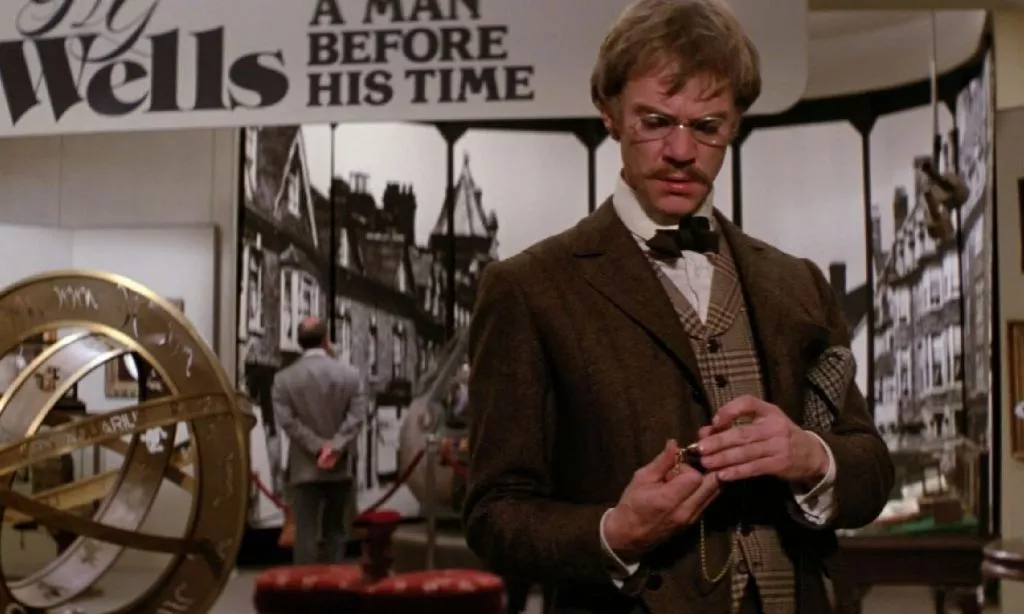
Three years prior to his pivotal contribution to Star Trek history with Star Trek II: The Wrath of Khan, Nicholas Meyer ventured into the realm of phantasmagorical storytelling as both writer and director. In this captivating adventure, set in 1893, H.G. Wells (Malcolm McDowell) invents a time machine, only to have it commandeered by the infamous Jack the Ripper (David Warner). The cunning serial killer transports himself to modern-day San Francisco, prompting Wells to pursue him into an unforeseen future that deviates significantly from the world depicted in his novels. Amidst his pursuit and efforts to prevent further bloodshed, Wells finds unexpected romance with a bank teller named Amy (Mary Steenburgen).
While Meyer’s directorial debut may exhibit occasional clumsiness, the ingenuity of the narrative, the stellar performances by the lead actors, and the endearing bond between Wells and Amy combine to establish Time After Time as one of the finest time travel movies ever made. Nimble in its execution, brimming with enjoyment and suspense, this film is unquestionably a worthwhile viewing experience that will not disappoint.
